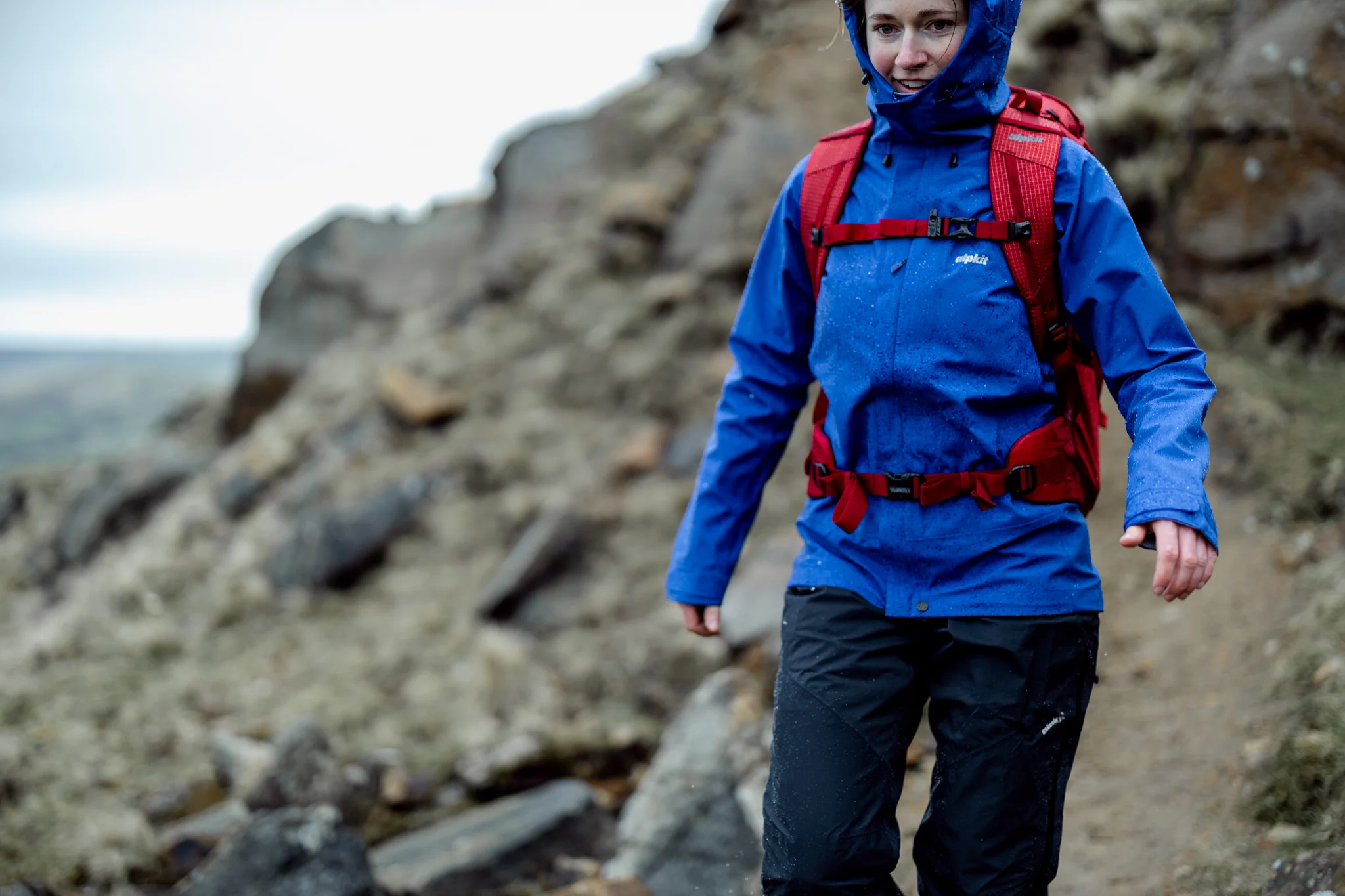Smart Layering: How to Dress for Outdoor Adventure
Layering Basics for Outdoor Enthusiasts
The art of layering for outdoor activities is akin to creating a personal climate control system for your body. A savvy adventurer knows that it’s not just about piling on clothes. Instead, it’s about choosing the right pieces that work together to manage temperature and protect against the elements. Well-known brands like Columbia Sportswear have mastered the technology behind effective layering pieces without bulking the wearer down. With the right base layer that fits snugly and wicks away moisture, you create the foundation for comfort and warmth. The insulating layer that follows should add warmth without excess weight. Puffer jackets filled with down or synthetic materials keep you toasty while granting freedom of movement. Your shell layer, the final touch, acts like a shield against wind, rain, and snow, completing your layering ensemble.
But smart layering involves more than just the ensemble. It’s about understanding that as your activity level and the outdoor temperature fluctuate, you’ll need to adjust accordingly. For example, taking off the insulating layer when you feel too warm can prevent sweat from cooling your body down suddenly, which could pose a risk in colder temperatures. It’s practical actions like these, paired with high-quality gear from trusted outdoor brands, that ensure a safe and enjoyable outdoor experience.
Choosing the Right Materials
In the world of outdoor apparel, every fabric has its function. The beauty of merino wool lies in its natural fibers, which provide an unmatched combination of breathability, insulation, and moisture-wicking without retaining odors. Synthetic fibers like polyester and nylon, favored for their durability and quick-drying features, are staples in the design of outdoor gear. They offer excellent alternatives for individuals engaging in water-centric adventures or those with a preference for vegan materials.
However there is a common misconception that an insulating layer must always be heavy to be warm. Design innovations in down and synthetic options have birthed clothing that feels almost weightless yet traps body heat effectively. The key is down’s superior loft – its fluffiness. Synthetic insulators, alternatively, are champions in wet conditions, as they mimic down’s properties without succumbing to the damp. A shell’s main role is protection—it should repel water but allow vapor to escape, preventing that ‘boiling in a bag’ feeling during vigorous activity. Fabrics with a breathable laminate or membrane accomplish this with aplomb, rounding off the layering trinity with functional finesse.
Regulating Body Temperature
Thermoregulation, the body’s ability to maintain its core internal temperature, is a vital aspect of any outdoor adventure. Proper layering directly supports this natural process by allowing for quick adjustments based on activity and environmental conditions. Imagine trekking up a steep incline; your body generates heat, and without the ability to shed the insulating layer, you could quickly become overheated. Conversely, when taking a rest or in the face of a cold wind, the body cools down rapidly, hence the need for that same layer once more. The act of layering becomes dynamic, a constant balancing act to avoid the effects of both hypothermia and hyperthermia.
Particularly in colder climates where retaining warmth is essential, the base layer keeps the body dry by moving perspiration away from the skin, which is the first defense against chilling. Advances in textile technology have introduced materials that not only wick away sweat but also generate warmth upon contact with moisture, adding an extra layer of protection.
Layering Strategies for Different Climates
The concept of layering, while universal, requires personalization based on the environment one expects to face. Whether braving the alpine cold, tolerating the desert heat, or navigating a rainforest’s humidity, the principles of layering allow for adjustment and modification. In hot and dry conditions, lightweight and breathable fabrics provide protection from the sun while allowing heat to escape. A shell layer in these environments might focus more on shielding from UV rays rather than resisting rain or trapping heat.
Understanding these nuances becomes critical when transitioning between microclimates. For instance, embarking on a coastal hike can mean starting off in a cool, sea breeze-heavy environment and ending up in an arid, sunny middle stretch. With appropriate layers, adventurers can confidently face the capricious nature of our world’s varied terrains. Successful layering is about anticipating the possible and preparing for it with selections from one’s outdoor wardrobe that are as adaptive as the ecosystems they explore.
Essential Accessories for Layering
Often undervalued, the role of accessories in an outdoor layering system can be pivotal. Detecting and responding to the body’s heat zones can affect overall comfort and thermal regulation. An extremity like the head, for example, is a significant source of heat loss. A simple beanie or balaclava can retain substantial warmth and can be easily removed to help cool down when necessary. Similarly, insulating gloves guard the hands against frostbite and facilitate dexterity required for tasks from setting up a tent to navigating with a GPS device.
Illuminating the impact of accessories, one can’t neglect the feet. Socks crafted from blends of merino wool, nylon, or special synthetic fibers ensure moisture is drawn away from the skin, decreasing the risk of blisters and keeping feet warm. Coupled with appropriate footwear, they complete the layering system and ensure you’re not only dressed adequately but also prepared for the variable conditions nature may present.
Dressing Tips for Hikers and Campers
The practical knowledge of dressing for the outdoors cannot be overstated. For hikers traversing terrains varying in elevation and topography, clothing with built-in flexibility such as zip-off pants or adjustable cuffs can provide relief when temperatures rise. Another crucial aspect is ensuring clothing provides adequate UV protection, a feature now commonly integrated into outdoor apparel.
Moreover, embracing the philosophy of ‘less is more’ through multi-functional pieces will lighten packs and make adjustment during trips quick and uncomplicated. Expedition layers featuring pockets that double up as vents or jackets with removable insulation panels exemplify the ingenuity of outdoor gear designed for the modern explorer. Above all, fit is important; too tight and layering loses its insulating air layers, too loose and it may catch on environmental hazards or impede movement.
Weather Considerations for Outdoor Apparel
Knowing what the weather holds in store is an essential part of any outdoor planning, but the real skill lies in interpreting what that means for your clothing strategy. A forecast of occasional showers demands a waterproof shell, but continuous exposure to rain might necessitate fully seam-sealed garments. When venturing into snowy terrains, the insulating layer should also have moisture-wicking properties to prevent the penetration of dampness through to the inner layers, which would sap warmth.
Common Layering Mistakes to Avoid
Even with all the right gear, missteps in layering can nullify the advantages they confer. One such mistake is neglecting to pack an insulating layer during warmer seasons, dismissing the possibility of a sudden chill, especially in mountainous areas or during an unexpected storm. Fugitive garments, if considerable thought has not been given to the layering sequence, can lead to frustration and time loss due to poor accessibility. Thus, understanding and practicing efficient layering goes beyond the accumulation of the appropriate gear — it’s about the application of knowledge and experience to safely enjoy outdoor pursuits.
Attempting to wear too many layers at once can also lead to excessive sweating, which then becomes trapped and leads to a rapid decrease in body temperature once activity levels drop. Thus, carrying compact, foldable layers that provide substantial warmth when needed but occupy minimal space in your backpack is paramount.
Care and Maintenance of Outdoor Layers
Sustaining the functionality of your layering wardrobe requires a commitment to regular maintenance. Paying attention to the care label instructions preserves the technical characteristics of the fabrics. For instance, machine washing using a gentle cycle and cold water can help maintain the integrity of waterproof membranes. Air drying or tumble drying on low heat, as recommended, can also play a role in extending the life of each garment.
Nonetheless, apparel may lose its waterproofing or insulating capabilities over time. To combat this, one might need to retreat waterproof layers with a DWR spray or wash-in treatment. Down jackets may require specific down detergents to preserve loft and warmth. Taking these small but significant steps ensures each piece functions optimally on your next journey into the wilds.
Sustainable Practices in Outdoor Clothing
The outdoor enthusiast’s kinship with nature naturally extends to a respect for the environment, a respect that should guide our clothing choices. Sustainable practices in outdoor apparel are not just about the composite materials but also about the production processes. Opting for brands that invest in fair labor practices, reduced water usage, and lower emissions is a step toward a more ethical consumption model.
Furthermore, eco-conscious adventurers would do well to invest in high-quality, durable items that defy the fast fashion model, thus reducing landfill waste. The journey towards more sustainable practices in outdoor clothing is ongoing, and encompassing ethics and environmental considerations into one’s gear selection is a powerful way to contribute to nature’s preservation.
Building on the insights provided here, a comprehensive guide can be found at Outdoor Research, elaborating on layering for colder environments. Meanwhile, REI’s detailed explanation of layering basics is a great resource for both new and seasoned outdoor enthusiasts to refine their approach to conquering various climates.
Keep an eye for more news & updates on Verifiedzine.com






